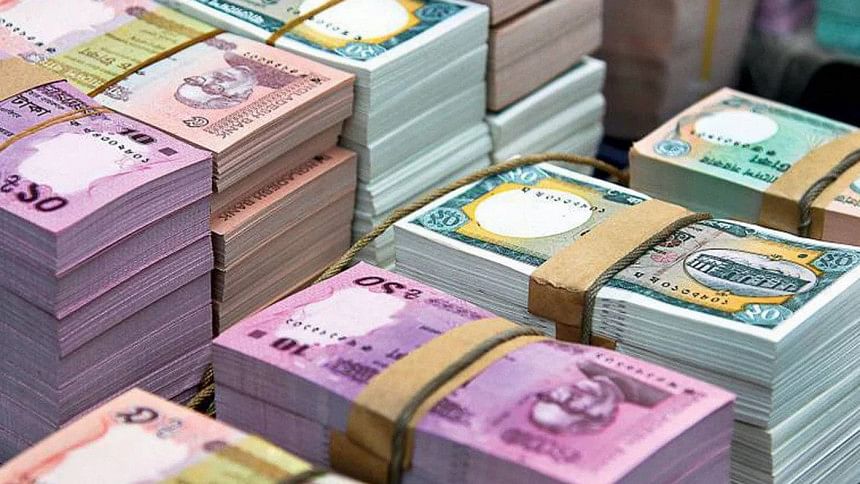Financial account deficit widens

The deficit in Bangladesh's financial account widened substantially in the first eight months of the ongoing fiscal year, in an indication that the current stress in the foreign exchange regime will continue in the coming months.
Between July and February of 2022-23, the financial account of the balance of payments (BoP) registered a deficit of $1.53 billion in contrast to a surplus of $11.9 billion a year ago, data from the Bangladesh Bank showed.
Historically the financial account of Bangladesh has experienced a surplus almost every year.
For example, it was $944 million in FY16, $4.25 billion in FY17, $9.01 billion in FY18, $5.13 billion in FY19, $7.54 billion in FY20, $14.07 billion in FY21, and $13.67 billion in FY22, according to the World Bank data.
Economists say although the deficits in both trade and the current account narrowed substantially in the first seven months of FY23, the foreign exchange reserves will continue to face stress in the days ahead owing to the large deficit in the financial account.
The reserves stood at $31.20 billion on April 3, down 29 per cent year-on-year.
A financial account is a component of a country's BoP that covers claims or liabilities to non-residents concerning financial assets. Its components include foreign direct investment, medium and long-term loans, trade credit, net aid flows, portfolio investment and reserve assets.
"The large deficit in the financial account means the country is facing a shortage of US dollars," said Ahsan H Mansur, executive director of the Policy Research Institute of Bangladesh.
"Policymakers have failed to manage the macroeconomy efficiently. So, the deficit in the financial account widened alarmingly."
According to Mansur, the central bank has given the emphasis on reducing import payments to tackle the shortage of the US dollar and pulled off some successes to this end.
Thanks to the fall in imports, the country's trade deficit declined 38 per cent year-on-year to $13.8 billion in July-February.
A pickup in remittance also lent a helping hand.
Last month, non-resident Bangladeshis sent home $2.02 billion, an increase of 8.6 per cent from a year earlier. This took the receipts to $16.03 billion so far in FY23, up 4.8 per cent year-on-year.
The deficit in the current account stood at $4.38 billion between July and February, down 66 per cent from a year ago.
"But the two positive developments have failed to offset the negative impacts emanating from the deficit in the financial account," Mansur said.
He says many foreign lenders are now showing reluctance to give out loans to local businesses, putting an adverse impact on the financial account.
For instance, trade credit, a major part of the financial account, registered a deficit of $3 billion in July-February compared to a surplus of $969 million a year ago, BB data showed.
"Many foreign lenders think that local businesses may face problems to repay loans," said Mansur.
He urged the central bank to withdraw the lending rate cap of 9 per cent so both local and foreign businesses keep funds in the banks of Bangladesh.
A financial account is a component of a country's BoP that covers claims or liabilities to non-residents concerning financial assets. Its components include foreign direct investment, medium and long-term loans, trade credit, net aid flows, portfolio investment and reserve assets
The fluctuation in the exchange rate between the taka and the dollar has given a negative signal to businesses when it comes to mobilising funds from external sources.
The taka has lost its value by about 30 per cent against the American greenback in the past one year owing to the fast-depletion of the reserves amid escalated import bills.
Zahid Hussain, a former lead economist of the World Bank's Dhaka office, called for a withdrawal of multiple exchange rates.
"Otherwise, the ongoing stress in the foreign exchange market can't be tackled. The multiple exchange rates have created a negative impact on the remittance inflow as well," he said.

 For all latest news, follow The Daily Star's Google News channel.
For all latest news, follow The Daily Star's Google News channel. 



Comments